Rennie Scaysbrook | June 8, 2018
Faster And Faster
Dunlop has stepped up to the plate to deliver what it calls their ultimate track day and aggressive street tire, the all-new Sportmax Q4.
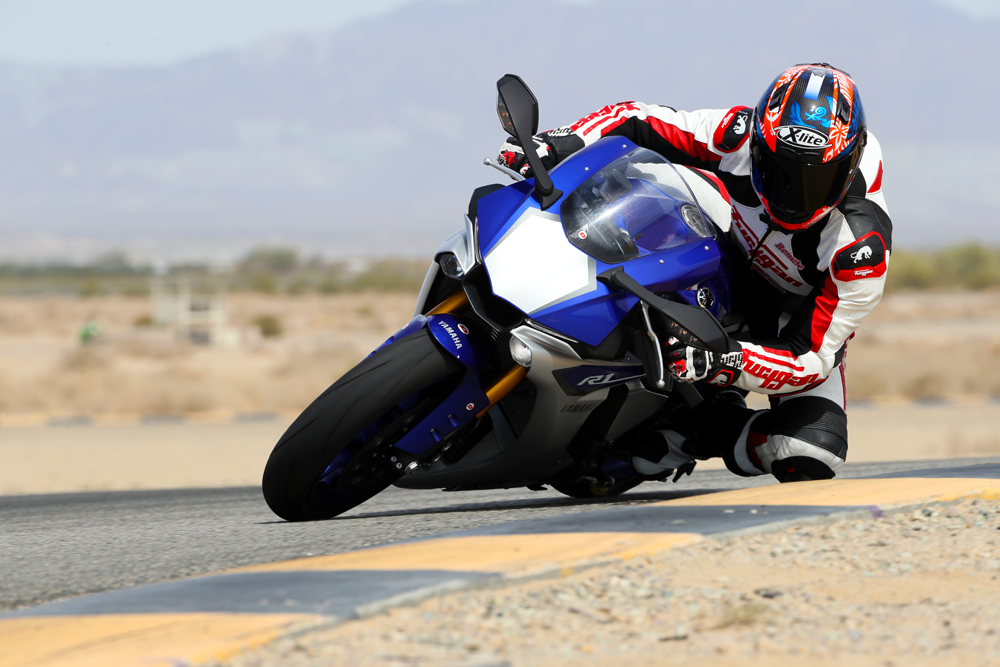 Dunlop’s new Q4 is aiming to be the ultimate road- and track-day tire. Dunlop claims you can get up to 62° lean angle with the tire. Thankfully, this is something Rennie did not try to test.
Dunlop’s new Q4 is aiming to be the ultimate road- and track-day tire. Dunlop claims you can get up to 62° lean angle with the tire. Thankfully, this is something Rennie did not try to test.
Sportbike tires are getting seriously good these days. Much like supersport bikes themselves, the performance of the black round thing covering the tires is reaching levels reserved solely for professional racers not that long ago.
Dunlop has been on a bit of a tear of late in the performance sport bike tire realm. Last year in April, we tested the Sportmax Q3+, a tire designed aimed primarily at the street rider but one who does more miles between traffic lights than starting lights.
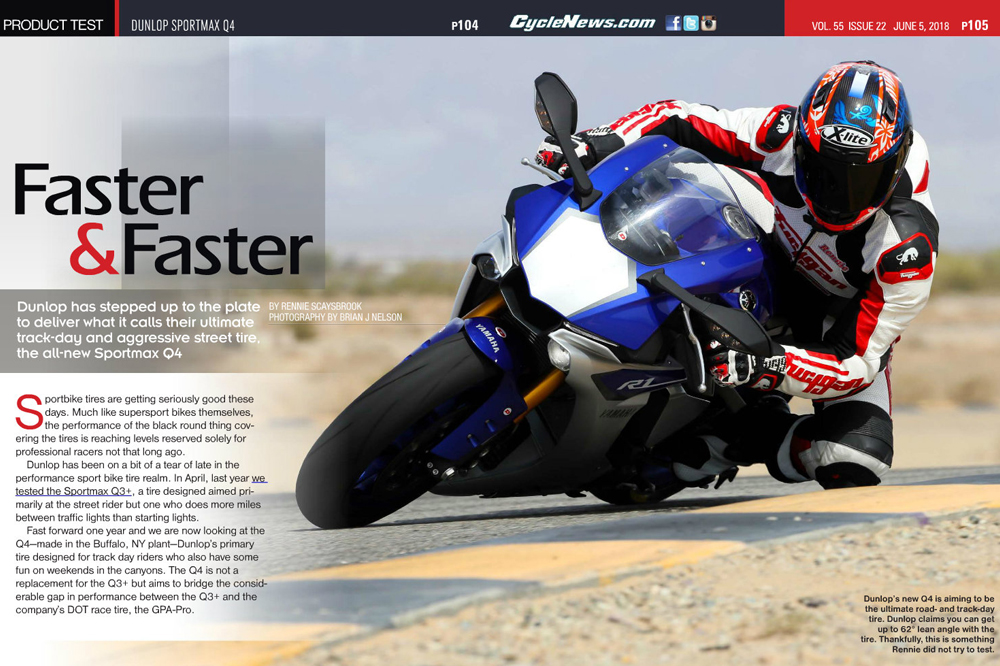
By Rennie Scaysbrook | Photography by Brian J Nelson
Fast forward one year and we are now looking at the Q4—made in the Buffalo, NY plant—Dunlop’s primary tire designed for track day riders who also have some fun on weekends in the canyons. The Q4 is not a replacement for the Q3+ but aims to bridge the considerable gap in performance between the Q3+ and the company’s DOT race tire, the GPA-Pro.
“We were shooting for ultimate performance with this tire,” says the Q4’s lead engineer, John Robinson. “We have a new compound with the Q4 and we are not using an extruded tread (cut tread) like we used to. Now, we are essentially using a 3D printer for the tire. It’s a robot that hovers over the tire as it rotates around and places rubber exactly where you need it, so you get everything laid out absolutely perfectly.”
Dunlop uses the Jointless Band Technology (JBT) that was first developed for their car tire line in the rear Q4, although this is not used in the front construction due to the smaller dimensions of a front tire.
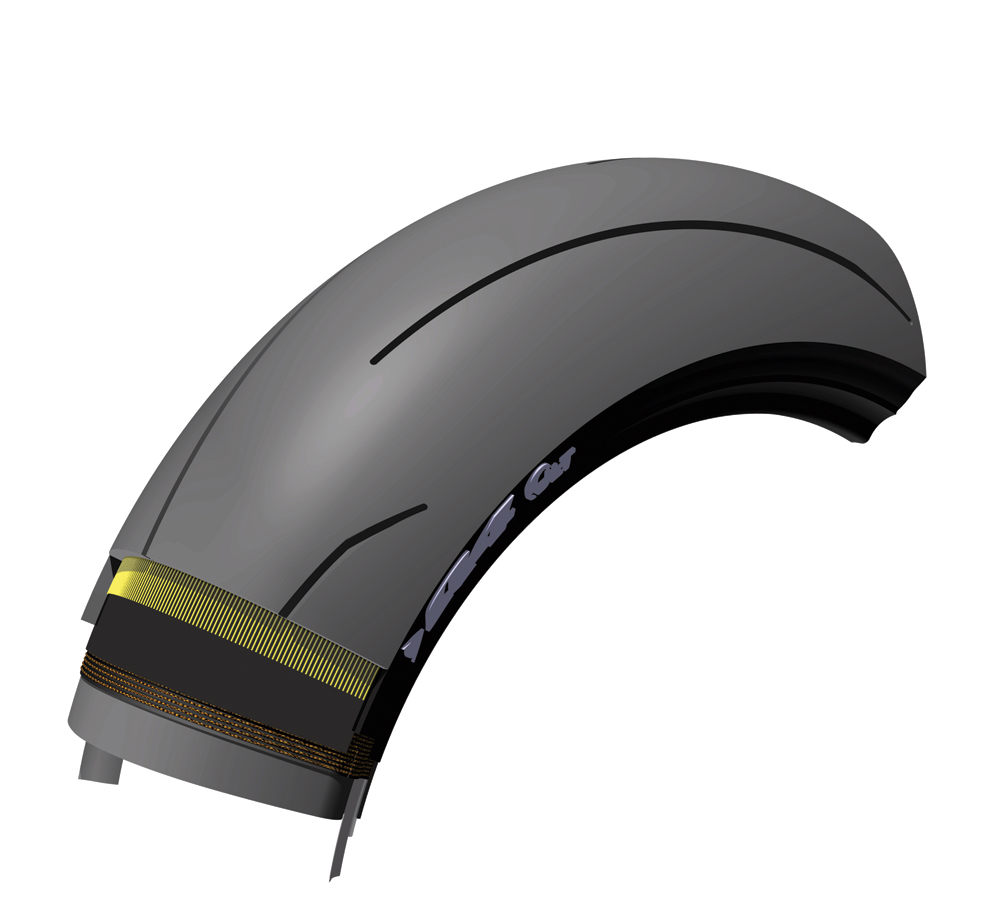 Rear tire cutaway: The Jointless Band Technology (JBT) in yellow can be easily seen over the top of the Kevlar belt (in brown). The tread design is vastly different to the Q3+ with no side grooves.
Rear tire cutaway: The Jointless Band Technology (JBT) in yellow can be easily seen over the top of the Kevlar belt (in brown). The tread design is vastly different to the Q3+ with no side grooves.
“JBT is the same technology used in our race tires for the past three years,” says Robinson. “It’s applied by a gear pump process. We spiral on the tread bit by bit, and this allows the compound to be a touch softer than if you had a traditional tread and it’s also a very precise application. It allows us to put gauge exactly as we need in the tire so you have what (characteristic) you want for all drive conditions.”
The Q4 is constructed using a monopoly nylon carcass with a Kevlar belt, helping keep weight down and add strength. There’s a one-pound reduction on the rear Q4 to the Q3+, and less unspring weight means less mass to accelerate, brake and turn.
The Q4s feature Dunlop’s Carbon Fiber Technology (CFT) to give added stability in the sidewalls under acceleration, braking and cornering.
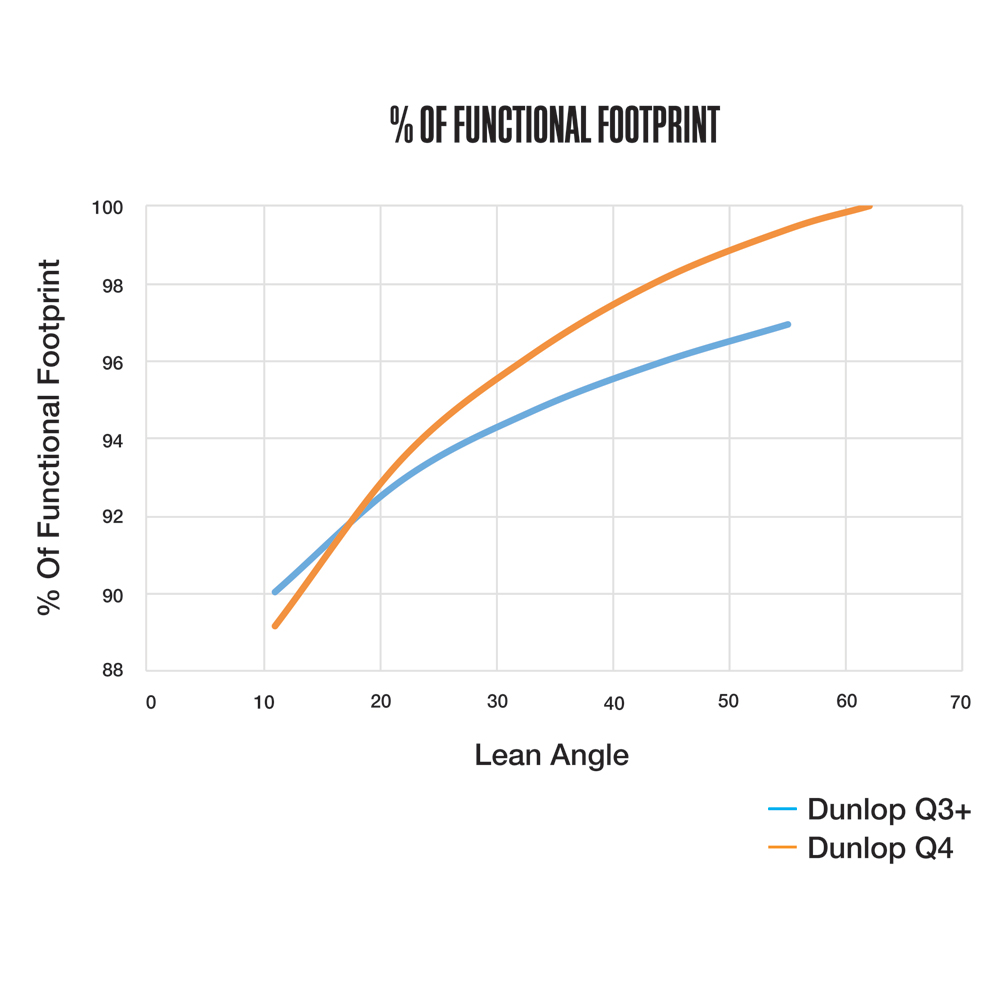 Here you can see the massive difference Dunlop claims for tire footprint between the Q4 in orange and the blue of the Q3+.
Here you can see the massive difference Dunlop claims for tire footprint between the Q4 in orange and the blue of the Q3+.
Unlike the Q3+ that uses a resin-based silica compound, the rear compound in the Q4 has no silica and uses all-carbon black like the slick race tires (and the center compound in the Q3) for maximum grip at high lean angles.
“We wanted this compound to be softer than the Q3+ to give us that extra grip but also allow us to not be a tire warmer tire,” says Robinson. “That means you’re going to have grip as soon as you go out on track. Fast warm-up times was one of the design objectives, but you’re going to get more overall performance out of the Q4 than the Q3+.”
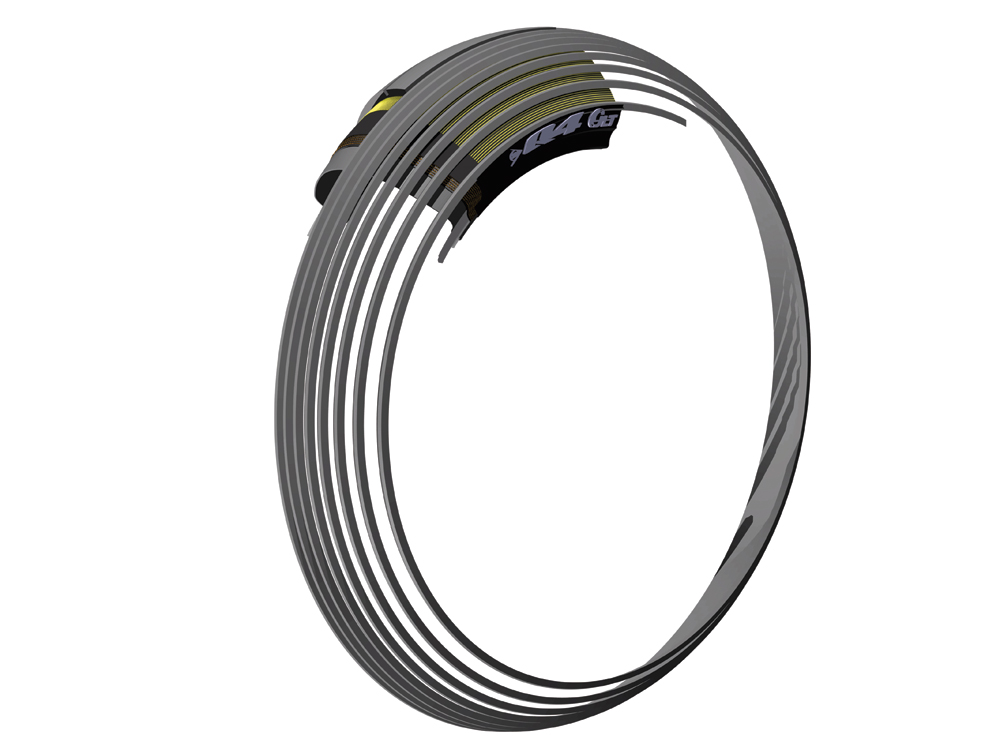 The Jointless Band Technology allows Dunlop to independently vary tensions across the tire during construction.
The Jointless Band Technology allows Dunlop to independently vary tensions across the tire during construction.
The Q4s feature Dunlop’s Carbon Fiber Technology (CFT) to give added stability in the sidewalls and Dunlop has used what it calls its Intuitive Response Profile (IRP) to aid turn-in speed and responsiveness via a taller profile with sides that taper in and allow more of the tire to flatten out more, putting more rubber on the ground when cornering.
“Profile design is one of the biggest ways we can control the handling of a bike,” says Robinson. “We were lacking a couple of sizes—we didn’t have a 180/60-17 and 200/55-17 in our line up and those sizes are really important for European bikes especially. The tires are a lot taller in the center (than the Q3+). That raises the back of the bike up, making the handling and steering quicker without having to mess around with suspension. Plus, having more tire on the ground at full lean means you can get on the throttle earlier and harder.
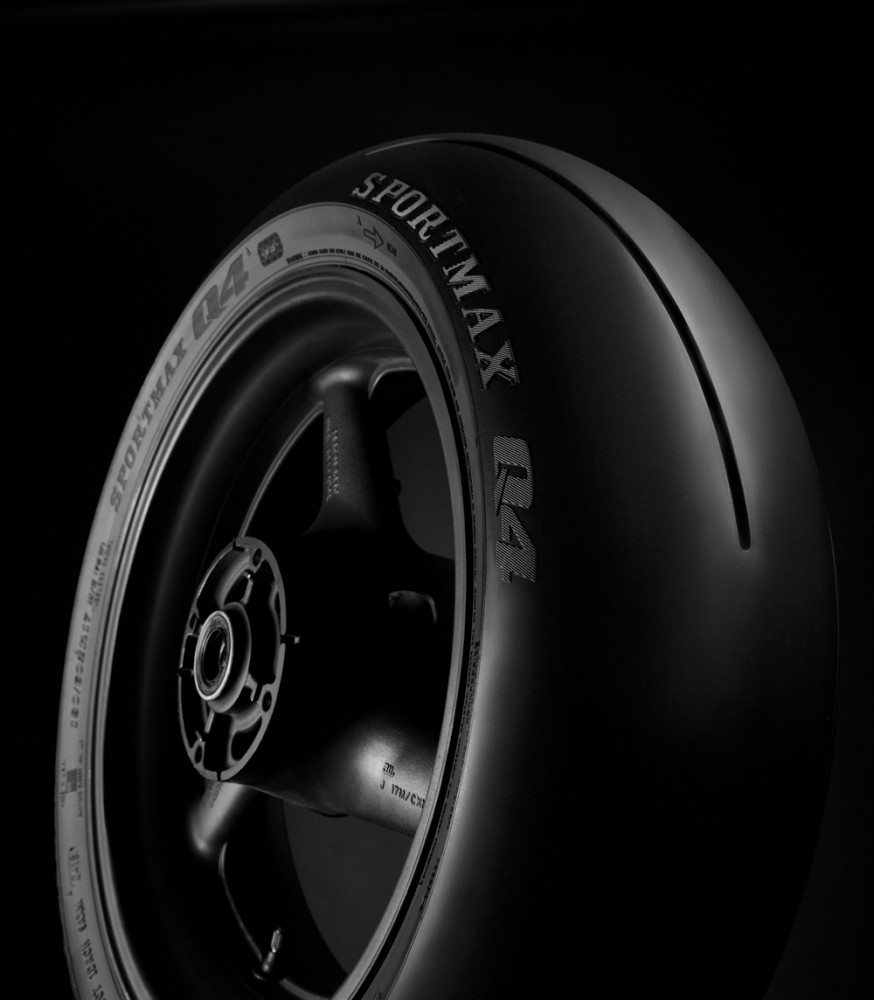 Here you can see the lack of side grooves in the Q4. It’s almost a proper slick.
Here you can see the lack of side grooves in the Q4. It’s almost a proper slick.
“The Q4 is almost a full slick,” says Robinson. “We changed the tread design to have the long grooves down the center and we are still FIM-legal in that we have 35mm between the end of the grooves and the shoulders and we have the five percent land/sea area we need. But we wanted to make it as close to a slick as you could possibly get. Bikes now have so much horsepower with so much technology, so we wanted to deliver a tire that can keep up with that.”
Dunlop is claiming an impressive 62° lean angle with the Q4 on track with test rider Taylor Knapp, as well as recording a jaw-dropping 1:28.793 lap time on a near stock 2017 Suzuki GSX-R1000R at the MotoAmerica preseason test at Barber Motorsports Park, putting him 10th overall on day one and just 3.4 seconds behind Monster Energy/Yamalube/Factory Yamaha YZF-R1 rider Garrett Gerloff in P1. Not bad for a street tire!
On Track
We did not get the opportunity to ride the Q4s on the street, so our only chance to sample the goods came at a hot, windy and super dusty Chuckwalla Valley Raceway in Southern California.
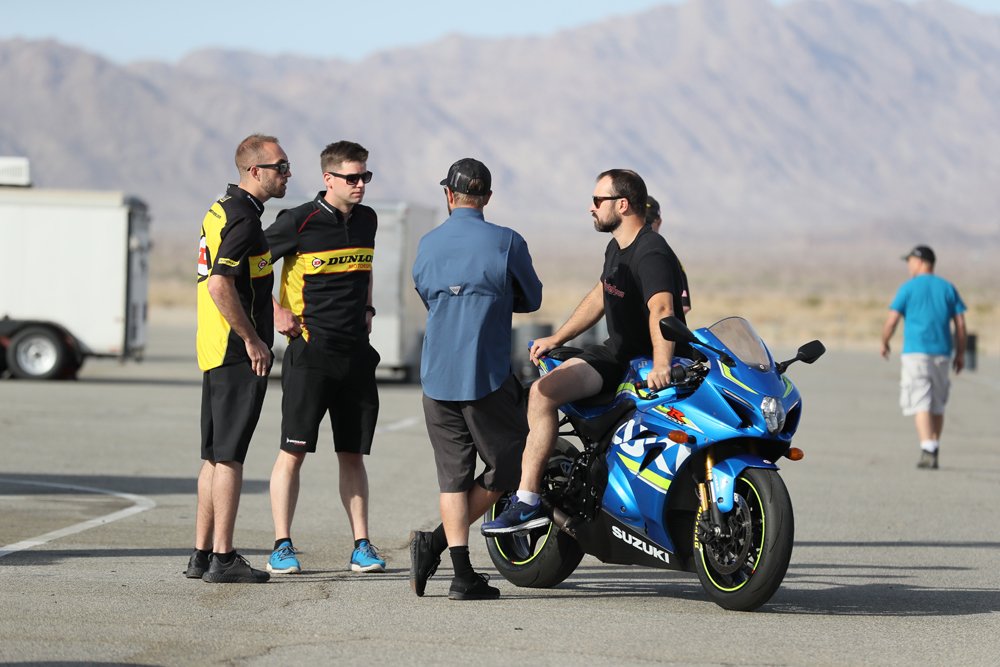 Rennie (on bike) getting the lowdown from Dunlop’s John Robinson (center) and Taylor Knapp.
Rennie (on bike) getting the lowdown from Dunlop’s John Robinson (center) and Taylor Knapp.
Having ridden the Q3+ tires last year and the incredibly impressive Bridgestone R11s at Utah Motorsports Campus a few weeks back, it gave me a good basis for comparison with the new Q4s.
As promised by Dunlop, there were no tire warmers allowed at the test. We were given brand new Q4s and told to do one warm-up lap, then pin it. Good news is, they performed exceptionally well.
I’ll say right away the most impressive single aspect in my mind was how quickly the Q4s got up to a good working temperature. Anyone that’s ridden Chuckwalla knows the heat of the place means getting rubber up to operating temps isn’t too difficult, but still, the way the Dunlops would throw good grip almost immediately at the rider was impressive.
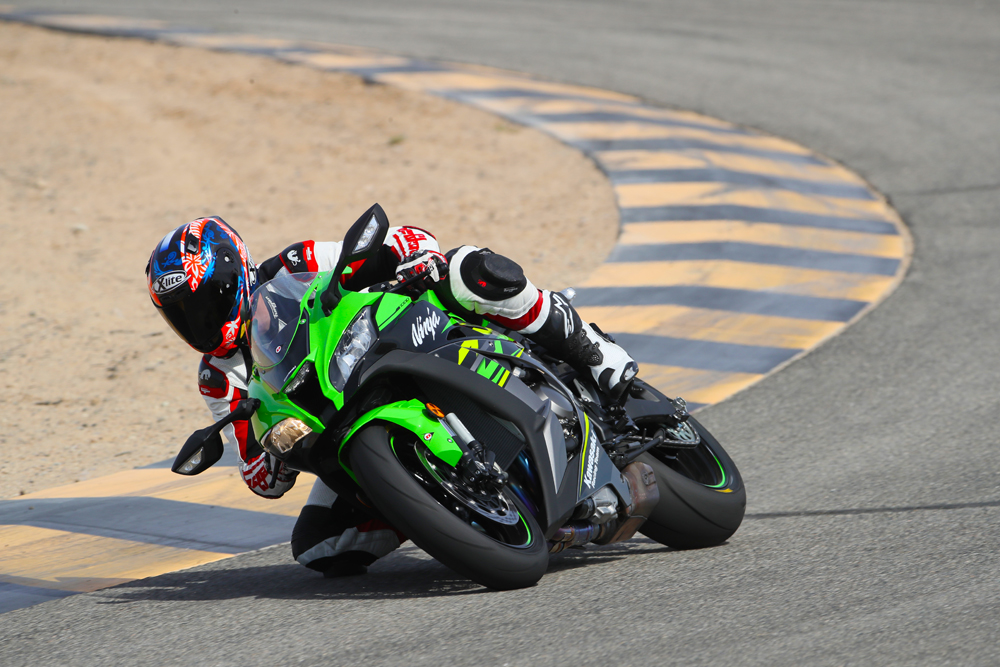 The Kawasaki ZX-10R gave the rear Q4 a proper punishing but the front held up well across the day.
The Kawasaki ZX-10R gave the rear Q4 a proper punishing but the front held up well across the day.
With a snaking Kawasaki ZX-10R underneath me, however, it didn’t take long before the Kawi’s power would begin to overhaul the Q4’s rear grip. Yet when the Q4 finally did begin to slide, it did so extremely progressively and calmly, rather than offering lots of grip and suddenly letting go with no warning.
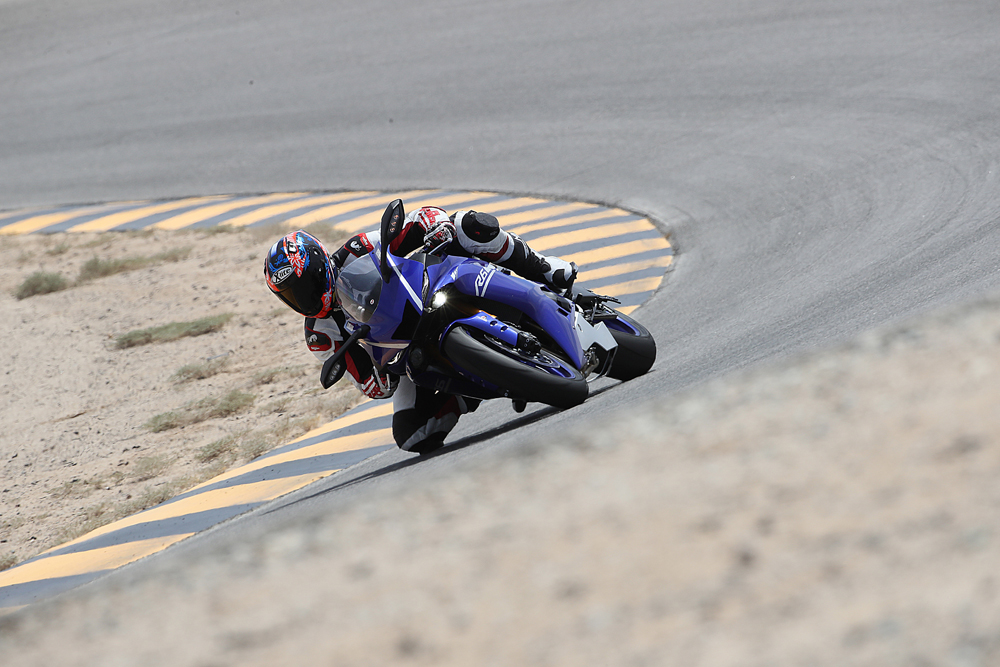 This is the bike where the Dunlop shined best—the Yamaha YZF-R6—with so much grip on offer and the right machine to use it.
This is the bike where the Dunlop shined best—the Yamaha YZF-R6—with so much grip on offer and the right machine to use it.
Turn-in performance is very impressive for what is primarily a street tire. As I changed to a Graves-fitted R1, I could begin to understand what was going on underneath me more clearly, and the lap times began to drop. Braking stability was very good, with loads of feedback being presented to the rider.
Initially I used the R1 with the 190/55-17 rear, switching later to the 200/55 ZR17. This made for a much calmer ride under acceleration, better stability under brakes and more edge grip. Here the R1 felt at home, rather than on a bit of a knife-edge like it did with the 190.
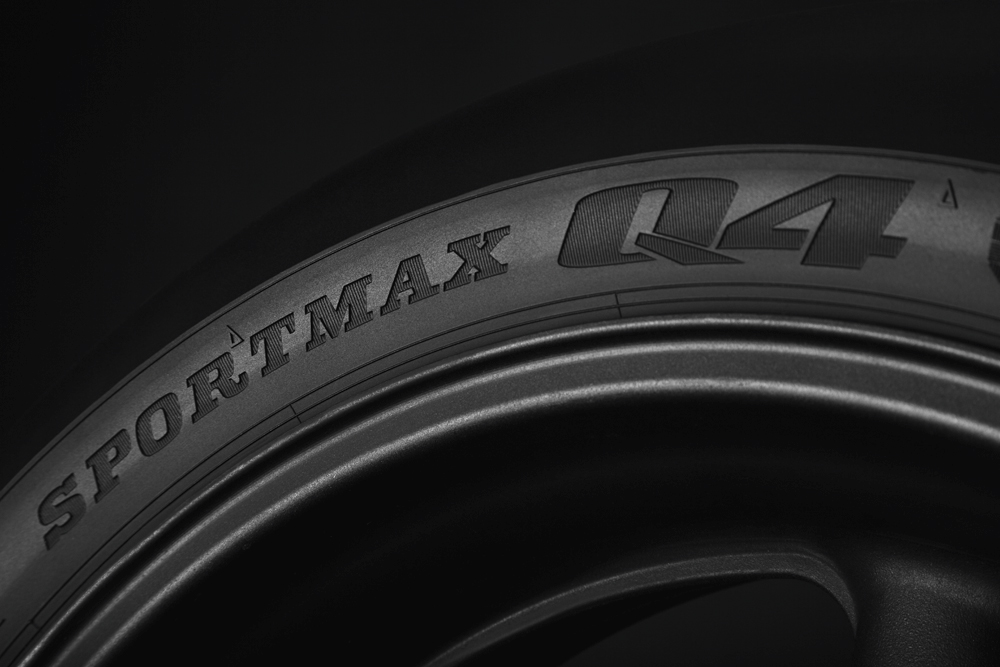 Dunlop even inscribed their logo onto the side of the Q4 for some added bling.
Dunlop even inscribed their logo onto the side of the Q4 for some added bling.
But where the Q4s are perfectly suited—in my opinion—is on a 600. Using the 2018 Suzuki GSX-R600 with a 180/55 ZR17 and a Yamaha YZF-R6 with a 180/60 ZR17 allowed the Dunlops to really shine. The combination of Dunlop Q4s, machine weight, power and handling, especially with the R6, was absolutely beautiful to experience. The R6 allowed the Dunlops to grip and grip, without making the rider feel like the machine power would overwork the tire.
During each run on different machinery, I had to remind myself this was a tire designed for street and track-day use in an almost 50:50 ratio, so remembering that fact made the Dunlops an excellent track partner.
The Q4s lack the outright grip of a race-only tire, but for a street tire capable of turning some fast laps, their performance is very impressive. CN